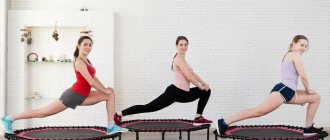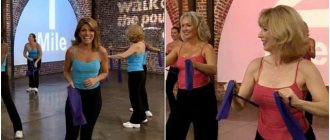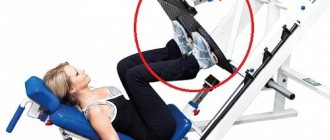Running is one of the most accessible types of physical activity, with certain training results. Even if you don’t set any exact sports goals for yourself, you are still developing some function of your body: improving your overall health, recovering from difficult competitions or workouts that happened yesterday or the day before, increasing the body’s endurance and burning fat, expanding aerobic capacity of the body, you increase the ability to run at such a speed that you previously did not run at all or could only run a very short distance. Each of the goals is achieved with the help of a certain load, well, where there is a load, there will be a heart rate, which in a running environment is usually measured in units of “beats per minute”.
Running heart rate is a very good and objective indicator (because it is expressed in numbers) of the load on your body - the higher the heart rate, the higher the load, the more energy the body uses, but also the faster you can run. Here a close analogy with the movement of a car suggests itself - the more you press on the gas, the more fuel enters the engine, the more power is generated when it is burned and the faster the car goes.
If you are an athlete actively involved in sports, or if you are an amateur who regularly participates in competitions, then we have special discount cards for you that allow you to receive significant discounts on the equipment, shoes or clothing you need.
However, it should be noted that this analogy has an even deeper meaning: with different fuel supplies, with different engine power output, different things happen - then, when you just start the car and move away, the car barely picks up speed, then it switches in second gear you accelerate even faster, after switching to third speed you can already overtake slower fellow travelers, in fourth gear, at speeds above average, you have access to cruising speed on the highway, well, fifth or sixth speed is for when you either need to get from point A to point B very quickly, or there is no speed limit on the highway.
It is impossible to reach a speed of 100 km/h at first speed, just as starting from a traffic light at “fourth” is very bad for the car’s engine. Each switch has its own job. Each “speed” is for a specific application.
The situation is exactly the same with the heart pulse. First, you warm up and run very slowly - the heart rate value in this case will be barely distinguishable from the resting state. Further, you increase the speed, and the pulse also begins to gradually increase. After this, you return to your usual speed, and your heart rate also reaches a higher value. But, here you decide to add more, for example, you want to overtake some slower runner in the race or you want to improve your final time that you achieved last time. Even greater speed means even greater heart rate, now you are just a bird flying low over the asphalt or trail track at this moment. The speed is pleasant for you, everything comes easy, no heavy sensations. However, you decided that it would be good to accelerate more and added more power to your “engine” - the speed increased to the maximum and you cannot run faster purely physically. The pulse is at its highest value and it seems that a little more and your heart will jump out of your chest. That’s it, the limit is your physical capabilities, your “machine” cannot “go” faster in any way - the pulse is at the maximum, your legs are not running, your eyes are dark.
An important conclusion that can be drawn from the idea that at a certain speed you can get a certain result is that at a certain heart rate (more precisely, in a certain range), it is also possible to achieve a strictly defined training result. That is, if you need to lose excess weight, then you need to run in the heart rate zone in which fat is burned. You need to train your endurance, pump up your cardiovascular system - you run in a different zone. If you want your body muscles to become stronger, you also run in a certain zone.
Why do all people have different “pulse zones”?
The fact is that people are all different - one weighs 70 kg, another weighs 90, one is a beginner, the other is a master of sports in athletics and is among the top ten best results at the Moscow Marathon, one runner has just started train and his cardiovascular condition is far from ideal, and the other has been training for 15 years and has already run 20 marathons. In total, there are several main factors that influence the pulse value:
Body mass.
People who are overweight “get” a high percentage of body fat and have high heart rate values compared to those who have a lower percentage of fat. Fat is ballast that the body needs to transport over a distance; the more of it, the more the muscles have to “work”, the more the heart has to pump blood to feed them, and the higher the pulse.
Level of training.
The higher the fitness, the greater the body’s ability, through the cardiovascular system, to absorb oxygen dissolved in the blood, pumped by the heart from the lungs to the muscles. Higher fitness means the heart needs less effort, pulse is lower, lower fitness means the pulse value is higher.
Smoking and drinking alcohol.
Bad habits that affect the state of the cardiovascular system and increase the heart rate.
Air temperature.
When it’s hot, the heart, in addition to delivering oxygenated blood to the muscles, also works to cool the body, essentially doing double duty. Double work = more effort = higher heart rate.
Painful condition. Before, during training, immediately after. Especially if you have recently had COVID-19.
Intense running reduces immunity, and then there is the disease with its viruses and bacteria, as well as medications. Naturally, the heart begins to work much more intensely in order to saturate the blood with the necessary elements to increase immunity, and if it is more intense, it means that the pulse value will definitely be far higher than the usual figures.
State of stress and tense emotional state.
Under stress, the nervous system works with great tension; the pulse in a state of physical rest can go off scale beyond 100 beats per minute. During stress, the human body experiences increased production of the corresponding hormones (adrenaline and norepinephrine), which “accelerate” the heart. Most athletes, going to a responsible start, notice an increased heart rate even before they crossed the starting line - this is precisely a consequence of the action of hormones. Just imagine that to the value of the pulse from emotional stress, additional beats from physical stress are added... Of course, the value of the number of beats per minute will be higher.
How to determine pulse zones?
In order to understand exactly how “pulse zones” are determined, let’s clarify thermionology. There are concepts of heart rate - Heart Rate and pulse. Heart rate is the number of cycles of heart contraction, a physiological measure of the heart's rhythm over a certain period, and "pulse" is the number of blood impulses that the heart expels after contracting, which creates a measured oscillation of the walls of the arteries that occurs over a certain period of time.
A more accurate parameter for determining “pulse zones” is heart rate, i.e. the number of heart cycles, and not the pulse, which, in fact, is a consequence of the heart’s contraction cycles.
The value of heart rate (like pulse) is a purely individual value and depends on the temporary and permanent factors that we cited above. Pulse zones are calculated from the MHR value - the maximum value of the heart rate. MHR is the greatest number of heart contractions per minute, which is achieved at the maximum capacity of the body during intense training. This is the highest number of beats per minute your heart can make at maximum effort.
To calculate MHR, you should not use mnemonic rules such as “…. (digit) - age = MHR.” Everyone’s body is different and such an equation has no scientific explanation.
It is best to find out the MHR in special laboratories where there is the necessary equipment in the form of treadmills and heart rate monitors.
For the same reason, it makes no sense to calculate pulse zones in absolute numbers. Qualified physiologists and sports doctors claim, and we agree with them, that at present it is correct to calculate pulse zones based not on specific heart rate numbers, but on the percentage of MHR identified during a test in the laboratory.
Knowing your own maximum heart rate, you can calculate your personal heart rate zones and make your own training plan that will develop certain qualities, and with the help of which you can prepare for important competitions.
A competent training plan should include training in various directions - to “pump up” certain qualities: increasing overall physical endurance, developing speed-strength qualities, recovery training after heavy loads and pre-competition, unloading periods.
How to calculate your maximum heart rate (MHR)?
This indicator is a theoretical conditional value.
The MHR is calculated using a certain formula: the number 220 minus the age of full years.
This is the simplest and most popular formula that can be used in load calculations. It must be remembered that this will be exactly the maximum indicator that is observed during intense exercise.
The normal resting heart rate of a healthy adult is up to eighty beats per minute. And, for example, in the morning when waking up, it may have lower values - on average seventy beats per minute.
It will become even clearer after watching the video:
What quality is trained in each pulse zone?
From your resting heart rate to your MHR, there are different heart rate zones that correspond to different workout intensities. Currently, a gradation of five pulse zones has been adopted. Training in each zone has its own characteristics and gives a certain result.
Very low intensity wellness area (white/grey).
50-60% of the MHR. This is where overall physical endurance improves. Training in this zone improves overall fitness, facilitates recovery from difficult and long workouts, and prepares runners for high-heart rate workouts. Training in this zone is the most comfortable, easy and accessible even for beginners. This zone is best suited for those who have either just started training, are overweight, or have a low general level of physical fitness - base.
Fitness zone (blue).
60-70% of MHR. Training in this zone also helps improve overall endurance. When exercising in this zone, the connection of fats as sources of energy begins, the quality of muscle fibers improves, and the density of the network of capillaries through which oxygen is delivered to the muscles begins to increase. Zone 2 training is an integral part of every runner's training program who wants to lose weight. When you train in this zone, the total number of calories burned increases compared to the previous zone. The condition of the cardiovascular and respiratory systems is significantly improved.
Aerobic zone (green)
70-80% of MHR. The most effective zone for endurance training. This type of running trains the aerobic capabilities of our body, i.e. the ability to absorb oxygen and transfer it as efficiently as possible to the muscles. Training in this zone stimulates the development of a large network of small capillaries. The number, elasticity and diameter of blood vessels increases, the volume of the lungs increases, the functional state of the respiratory system improves, and the heart becomes stronger. Training in this zone increases the efficiency of blood circulation in the heart and skeletal muscles. When training in this pulse zone, lactic acid begins to enter the bloodstream.
Anaerobic zone (yellow/orange).
80-90% of MHR. Training in this zone develops maximum performance and improves speed endurance, i.e. the ability to run fast and long. When the pulse reaches 90% of the MHR, the oxygen carried by the blood begins to be insufficient for oxidative reactions, so the cells switch to an oxygen-free anaerobic mode. Fats in this zone are practically not burned, and carbohydrates stored by the body are used to obtain energy.
A by-product of metabolism in anaerobic mode is lactic acid, which begins to be released especially intensively. It causes an increasing feeling of fatigue in the muscles, so training in the anaerobic zone will not work for a long time. Short-term, high-intensity workouts are usually planned and completed in this zone. The result of training is an improvement in maximum oxygen consumption, which means that the “acidification” of muscle fibers in trained runners will occur later. The value of the threshold of anaerobic metabolism, at which the body stops utilizing lactic acid, also moves upward. Endurance increases significantly.
Maximum effort zone (red)
90-100% of MHR. Training in this zone develops maximum performance. The body learns to work at the limit of its capabilities, using up all available energy reserves; the respiratory system and cardiovascular system work with the highest possible efficiency, at the limit of their capabilities. Lactic acid will accumulate intensively in the blood, and after a few minutes you will not be able to continue exercising due to total fatigue. Training in this zone is typical for professional athletes in the pre-competition period. For people who want to lose weight or simply improve their health, being in the “red” zone is highly discouraged, either during the competitive or training period. If you have driven yourself into this zone, then our recommendations are to get out of it as quickly as possible.
Treadmill training programs
If you think that treadmill training is limited to walking or jogging, you are sorely mistaken. Find out what variety of exercises and workouts this machine can give you.
There are many fitness methods for getting rid of extra pounds, but opinions agree on one thing: a treadmill for losing weight is the most effective means, of course, subject to a well-designed training program.
Benefits of a treadmill
Training on a treadmill has a healing effect on the entire body: your blood pressure is normalized, the functioning of the cardiovascular and respiratory systems improves, and bones are strengthened. This aerobic exercise, which is running, develops your endurance. You saturate the entire circulatory system with oxygen, increasing muscle tone. And all this in addition to the fat-burning effect. On average, calorie consumption on a treadmill is 600-700 kcal/hour. This number may vary depending on the intensity of your workout.
Researchers from King's College London have found that exercise that strengthens leg muscles can improve cognitive performance in older adults over the long term. In a study of 324 healthy twin sisters followed for 10 years, researchers found that leg exercise slowed the rate of brain aging, which was a protective factor against Alzheimer's disease.
How to run correctly
Running technique. While doing exercises on the treadmill, your shoulders and chest should be straightened and your abs tense. The arms are also included in the work: they are bent at the elbows at a right angle and act in the opposite direction, which increases blood flow. Move smoothly, gradually increasing the pace from slow to fast. Read more: running technique.
Breath. Breathe deeply through your nose.
Best time to train. The debate about whether it is healthier to run in the mornings or evenings has been raging for a long time. If you have time in the morning, start the day with a cold or contrast shower and a run on the treadmill. This will energize you for the long day and will rev up your metabolism to earn carbs for breakfast. An evening run will allow you to relieve stress and calm your mind, in addition to all the other effects of running. Whatever time you choose to exercise on the treadmill, it is definitely healthier than lying on the couch.
Heart rate zone for fat burning To calculate the effective heart rate zone for an adult, during exercise in which the muscles work and the fat burning process occurs, use a special formula:
“220 minus (number of years)” or “200 minus (years after 20 years)”
Once you've calculated your maximum heart rate for your age (if you're 40, it's 180 beats per minute), you can determine your effective zone. In this example, this is 65 - 85% of the maximum, that is, from 180x0.65 to 180x0.85 = 117-153. It is better for you not to cross the boundaries of this zone: if the pulse is higher, there is a risk of overload, if lower, the effect of training on the treadmill will be minimal. Remember your effective heart rate and try to stay within its limits during cardio. But be careful: If you're 40 and this is your first cardio workout since college football, choose a gentler regimen.
Duration of training Due to the physiological characteristics of the body, it is important that your training is long enough. You can exercise with a heart rate slightly below the effective zone, but in this case your training on the treadmill should be longer by 20-30 minutes, ideally from 40 minutes to 1 hour. The optimal amount of training on a treadmill is 3 times a week. If you exercise more often, the body simply will not have time to recover and such loads will not bring benefits. And a weight loss program consisting of 1-2 workouts per week is practically useless (unless you supplement it with strength training).
Treadmill exercises Walking
It has an almost miraculous effect. In addition to accelerating the fat burning process, walking can relieve tension while simultaneously working all muscles. A minimum of 30 minutes of vigorous walking a day, either outside or on a treadmill, will help you maintain cardiovascular and respiratory health.
Run
The benefits of running on a treadmill are literally legendary. This type of cardio is the most popular, and is truly addictive - in the good sense of the word. If the first runs may give you mixed feelings of reluctance and laziness, then over time running training will be a joy.
Sprint
Allows you to get the most out of your potential. This type of treadmill workout requires you to push yourself to the limit, but also burns calories at full capacity.
Inclined
This is the easiest way to make your workout more challenging. By changing the incline angle, you contribute to even faster weight loss during workouts on the treadmill. Today, a method based on alternating walking at an incline and walking at a certain speed is increasingly gaining popularity in the niche of cardio training. And for good reason: regular exercise of this type really allows you to get your figure into the desired shape in a short time.
Speed
The main enemy of training effectiveness is monotony. There is only one way to avoid tedious exercise - by turning your treadmill workout into a game of speed. By alternating between jogging and walking, or walking and running at top speed, you'll get more fun and better results from your treadmill workout.
Interval training on the treadmill
If you accept the rules of the speed game mentioned above and include alternating rest and acceleration in your workouts, you can lose weight many times faster. This type of training is called interval training, it is distinguished by the duration of the intervals: limited in time or lasting as long as you have the strength.
Clearly timed intervals in training on a treadmill can be different, for example, 1 minute of sprint, 2 minutes of recovery, or 4 minutes of intense running with an incline, rest - 7 minutes. Planning for such an interval cardio workout on a treadmill depends on your physical fitness and cardiovascular health.
Interval training on a treadmill that does not have clear intervals is called “fartlek”, from the Swedish fartlek - “speed game”. This type of training involves running at full strength until failure, to use bodybuilding terminology. Once your strength is gone, take a recovery break, walk, and then run again at top speed. The most important thing for weight loss in this type of training on the treadmill is to work at your limit during the speed segment. Give it your all, stopping only when you no longer have the strength.
Whichever treadmill interval training program you choose, you'll notice results soon: it's been proven that calories continue to be burned even after the workout ends. set of exercises on a treadmill
Treadmill workout
Choose your level
Beginners: You should be prepared to do aerobic training for at least 3 months. Spend at least 2-4 weeks on endurance training, and only then move on to interval training.
Continued: You are in this group if you have been doing aerobic exercise at least 3 times a week for 3 months or more.
Advanced: You can focus on the level of requirements for this group if you have been doing aerobic training 4-5 times a week for at least 6 months.
All workouts should begin with a warm-up - 5 minutes of low-intensity cardio exercises: leisurely jogging around the gym or exercises on cardio equipment. The same amount of time should be allocated to complete the workout for the cool down. Cardiac activity should be changed gradually, the most harmful thing for our heart is not only the rapid onset of intense long-term exercise, but also its abrupt cessation.
Choose an aerobic intensity level that allows you to maintain a steady heart rate throughout your workout.
The principle of training
Every two weeks for beginners and intermediates, you can either increase the intensity of your workout or increase your workout time by 5%.
Most importantly, do not increase the intensity and duration of your workout at the same time!
The proposed cardio training program on a treadmill is designed for 30 minutes and consists of a warm-up, a uniform load, buttock training and a tempo part.
Warm-up
- Duration – 5 minutes
- Running speed – 5-6.5 km/hour
- Slope – 0%
Start your workout at the lowest speed. After two minutes, increase the speed by 0.3 km/h every 30 seconds. Gradually increase your speed to 5.5 km/h.
From time to time you can rise on your toes, holding the handrails, then walk on your heels for a few seconds. This is necessary to prepare the lower leg for walking uphill.
Try to stretch your arms and upper torso as well.
Uniform load
- Duration – 10 minutes
- Speed – 6.5 km/h
- Slope – 1%
Gradually increase your speed by 0.3 km/h until you are running.
At this point, those who prefer walking should reduce their speed by 1 km/hour, and those who prefer running should increase their speed by 1 km/hour.
Drive at this operating speed for 5 minutes on a 1% incline.
Then increase the incline to 3%, and for 5 minutes, increase the incline by 1% every minute thereafter, up to a total of 8%.
Strengthening the buttocks
- Duration – 10 minutes
- Working speed
- Slope varies
Reduce the slope to 2%. Walk or run at a working speed for 1-2 minutes. After this, walk or run at maximum speed, and then for 1 minute reduce the speed by 1-2 km/h.
Repeat the intervals twice. Increase the incline to 12% and begin brisk walking at a steady speed for 3-4 minutes. Repeat intervals and moving uphill.
Tempo part
- Duration – 5 minutes
- Speed - working
- Slope – 2%
Reduce the incline to 2% and run or walk at your running speed for 4 minutes. Then reduce the incline to 0% and gradually slow down to lower your heart rate.
Don't forget a water bottle and a towel. Guide yourself - 50 ml every 10 minutes.
Goal: make your legs beautiful
Choose between hills and rough terrain programs on the track. In “hills,” ascents alternate with movement in a straight line (this task is more difficult), and in “rough terrain,” with descents. If you are not very hardy yet, it is better to choose this one. But just don’t try to alternate walking uphill with running in a straight line. This is an unfortunate option: an experienced athlete rests while running in a straight line, but for beginners, both running and walking uphill is a considerable load. In this case, it is better to reserve only one of the running sessions per week for “hills”.
It is better to line up the “hills” as follows (by slope in percentage): 1-3-1-5-1-7-1-5-1-3-1. Run at your average pace, uphill for 1 minute, straight for 40 seconds. Don't forget about the cool-down and warm-up: 7-10 minutes of easy running at the beginning and end of the workout.
Goal: develop speed qualities
After 5-7 minutes of easy warm-up running, begin to accelerate. “To learn to develop higher speed, do a 25-second jerk, trying to give your best,” advises Evgeniy. - Then go to a slow run or vigorous walk and recover for 2-3 minutes. Make another throw, rest again. Repeat two times or more. How much exactly - decide based on your well-being (as soon as you realize that you are too tired for the jerk, stop) and time - interval training should not be longer than 20-30 minutes.”
To develop speed endurance (after all, our task is not just to rush to the finish line, but also to reach it), accelerate to a heart rate of 80-90% of the maximum and try to maintain the pace for 40-50 seconds. Then rest for 3-5 minutes.
Goal: lose weight by 5 kg
The figure in this case is very arbitrary: in three months you can lose one or eight kilos, depending on your initial weight (very obese people lose weight faster), nutrition and the amount of training. The treadmill offers two paths to a slim figure.
- The first is long, 40-60 minutes, training at a moderate pace (heart rate - 60-70% of maximum). Light running or walking, which is more suitable for obese people, can be practiced at least daily or even twice a day. For the muscles, this is not such a serious load that a day of rest is required after it.
- The second way is interval training. The intervals here will be different than with speed training. Try starting with one-minute bursts of acceleration, alternating them with a three-minute rest - running at a moderate pace. The task can be gradually made more difficult by increasing speed intervals and reducing recovery time: first to a ratio of 1:1, then to 2:1. It's important not to overwork yourself. Since interval training can lead to overtraining, you need to alternate it with others and apply it: we give it our all for two or three weeks, then take a break.
Remember that diet is the main contributor to fat loss.
How to use heart rate zones for training?
First of all, it should be noted that each training plan is made exclusively for a specific runner, for his goals and objectives, taking into account the physical state in which the runner is before the start of the training process, taking into account the time before the key start for which the person is preparing.
If you want to train qualitatively, we recommend contacting our partners - companies that have proven themselves in organizing training processes:
- World Class – network of fitness clubs No. 1
- I Love Supersports is the world's largest cycling school
- S10 is the largest trainer marketplace and platform for online training in Russia, with templates, calculators, artificial intelligence and CRM system
- Pro Trainer – personal training studios
For quality training you will definitely need:
- running shoes
- quality running clothes
- If you are going to do trail running, it will be difficult to do without running backpacks
- Belt bags will help you take everything you need for a run: phone, keys, wallet, gels, water bottle, etc.
- special bottles and flasks for water. Various volumes and colors
- massage balls, rollers, cylinders, fitness bands, training loops - this is what will help you during general physical training and during the recovery process after running
- running sunglasses
- sports nutrition - to maintain your tone during races and for recovery after
- bandages and tapes will help you recover better and faster or protect yourself from injury
The goal of any training plan is the development and improvement of very specific physiological parameters, physical and mental qualities. Well, since there is a meaningful “goal”, then it is obvious that there is a certain starting point - something from which you begin your path to the goal. In order to understand what state you are in, why you “start”, what you need to train, we recommend that you undergo special testing - a treadmill test in a laboratory or medical center, which objectively, in “digits”, will show - in what condition is your body in?
A treadmill test is testing an athlete on a treadmill with an assessment of the functional state of his cardiovascular system, the level of MOC (maximum oxygen consumption), determining the MHR and TANO (the threshold of anaerobic metabolism or lactate threshold, after which the body is no longer able to process secreted lactic acid sufficiently). Such testing makes it possible to detect dangerous pathologies in the cardiovascular system even before the start of intense running sessions, since it is carried out at the limit of the body’s functional capabilities.
Based on the test results, a “digital” picture of your condition is obtained. Based on this data, your “pulse zones” are determined and your training plan is built, which should develop what you need to develop and what is desirable.
Tips for heart rate training:
- All runners should alternate between the first four heart rate zones during training. The training process should include training in all zones. The “red” zone should be reserved for competitions when you are at the peak of your physical condition.
- Warm-up should be based on the principle: “first we turn on first gear and drive very slowly, when the engine warms up then we will strain it.” The vast majority of professional trainers say that warming up before the workout itself is an urgent necessity, but it should smoothly immerse the body in an increasing load; stretching unwarmed muscles is dangerous. A light jog with the heart rate accelerating to the second pulse zone so that the muscles are saturated with blood is the best prelude to a good warm-up.
- Recovery training after high-intensity exercise is as important as all training before and should be entirely in the green or blue heart rate zone.
- Recovery is no less important than tension. Insufficient recovery, “more and further”, deviation from the training plan is one of the most common mistakes of beginning runners, directly leading to injuries and a depressed emotional background. Recovery time - for both physical and emotional rest. If, after the recovery period, during training you see that your pulse is “off the charts”, that at the usual speed your heart rate “flies” to a different pulse zone, this is a sign that you have not rested enough and you need to reduce your ambitions regarding the intensity of your training .
- Interval training is no less important than long or tempo training. Beginner runners often neglect them, but they are necessary to do. Settings in your gadgets will help you control your stay in a certain heart rate zone, without going to the “maximum”.
- If your main goal is to “lose weight,” then you need to alternate training in the fitness - “green” and aerobic - “orange” zones - No. 3 and No. 4. However, if this is not enough for you, and you want to improve your own endurance, for example, to achieve the best time in official races, then you can increase the number of anaerobic training in the “orange” zone - No. 4.
- Perhaps one of the simplest ways to explain the difference between the aerobic and anaerobic zone is the expression: “If you can talk calmly while running, then this is your aerobic zone. If you are running so fast that you can no longer speak freely, then you are running in the anaerobic zone.”
When going out to train with a specific goal, run based on your heart rate, trying not to go beyond a certain heart rate zone - this way you can progress without injury or emotional burnout.
It's never too late and never too early to start training with running. Running is an extremely democratic sport, accessible at any age. Before starting any training cycle, be sure to consult a doctor, get examined and get clearance to run.
We highly recommend purchasing anything running related after visiting a Kanta store in person and consulting with our professional sales staff.
If you live in a city where there are no our stores, then this is not an obstacle to purchasing what you need. Simply, when making a purchase through our online store, please note that we have delivery by couriers and transport companies.
You can also use self-pickup if that's more convenient for you.
However, if you are confident in the model, if you are sure that the specified size or size will suit you 100%, then our online store is at your service. When purchasing online, we offer various payment systems:
- cash to courier
- Bank transaction
- on the map
- by installments
- using a gift certificate
All details on different forms of payment
Why measure your heart rate when training for weight loss?
It is necessary to build your workouts based on your heart rate in order to quickly achieve your goal.
It is recommended to correctly determine your zones in which this indicator will be maximum, effective and safe. The training must be tailored specifically to your individual characteristics - gender, age, weight, health status, level of physical development and correlate these indicators with the purpose of training.
Therefore, it is better to calculate the coefficient for each individual person.
Also learn about the effects of running on mental and physical health .
Peculiarity! For weight loss, the principle “the higher the heart rate, the more benefits I will get” does not work.











